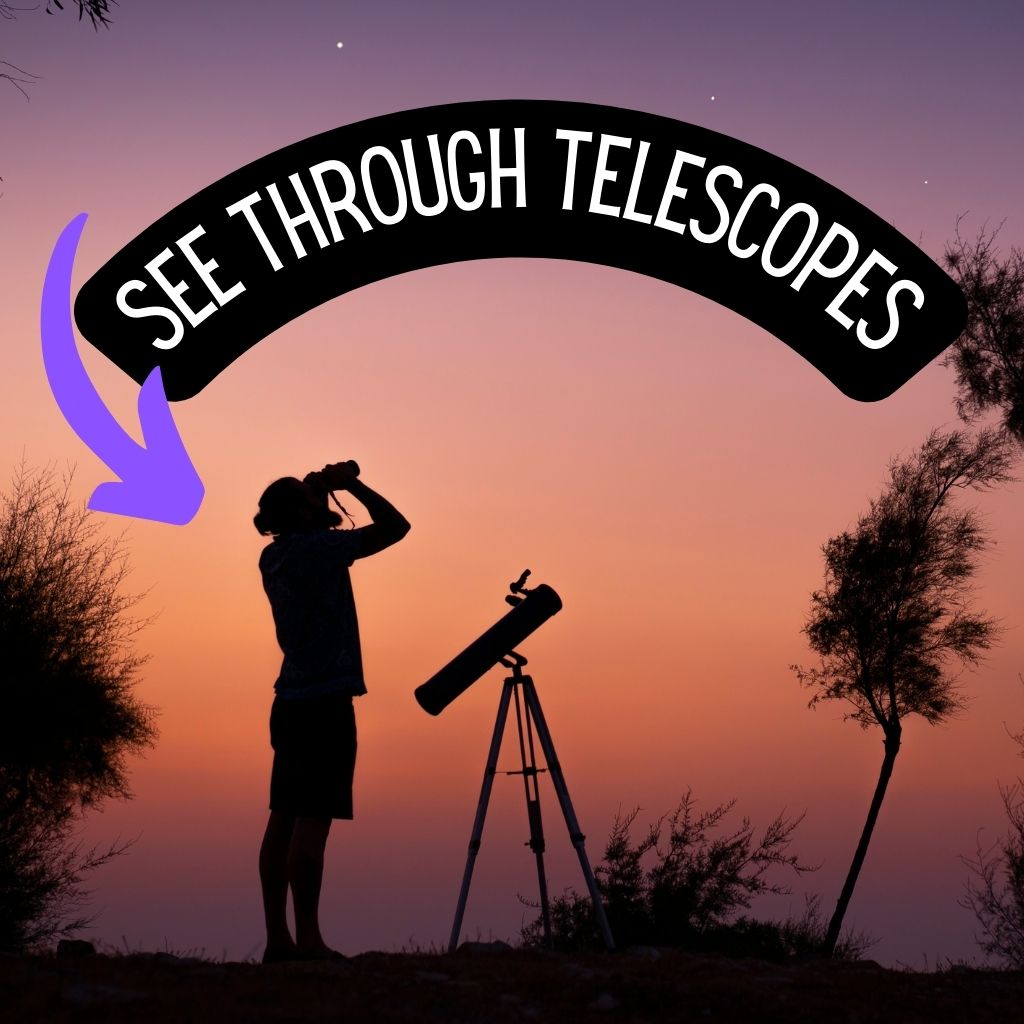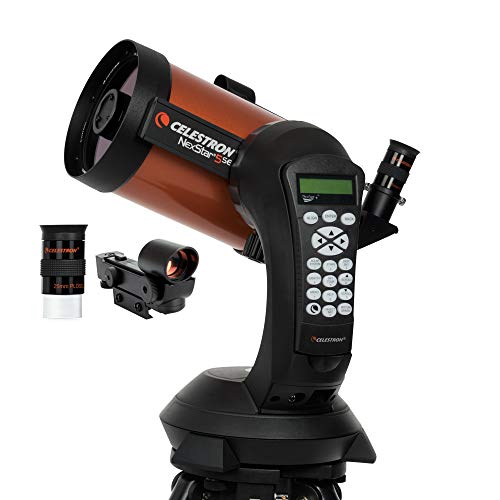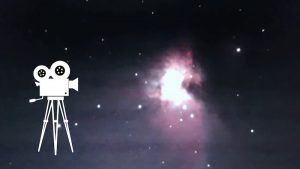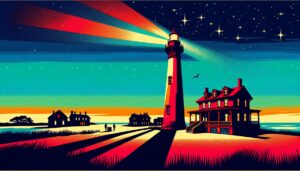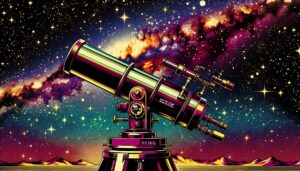This site contains affiliate links to products. I may receive a commission for purchases made through these links.
The universe will always wow you every time you aim your telescope at it. Abundant beauty and mystery are waiting for anyone who looks up. From the most obvious targets like the Moon and planets to distant galaxies and star clusters, you will never run out of targets.
Most people are unaware of the unlimited deep-sky objects they can view through a telescope. The planets, moon, stars, nebulae, star clusters, and galaxies are just an introduction to the vast and mysterious universe surrounding us.
In this article, we will look at the various kinds of targets you can see through different telescope types. Get ready to explore some of the most incredible sights that our universe has to offer!
Viewing the Moon through a telescope
Using a telescope to view the moon is not just about pointing and looking; there is a whole world of detail to explore. Of the 181 orbiting planets and dwarf planets, 19 of them are large enough to look like the moon. You need to know the best time to take out your telescope for moon viewing to enjoy the different moon phases. Every phase presents a different face of the moon, from the full moon to the half-moon.
The terminator helps you to distinguish between the illuminated and darkened parts of the moon’s surface. With higher magnification, you can see crater walls and mountain ranges on the lunar surface.
The Celestron NexStar 5SE Telescope Computerized Telescope for Beginners and Advanced Users is an ideal telescope for viewing the Moon. Its 5-inch aperture and computerized mount make it easy to find different lunar features.
Some of the breathtaking features of the moon you can enjoy include:
Craters of the moon through a telescope
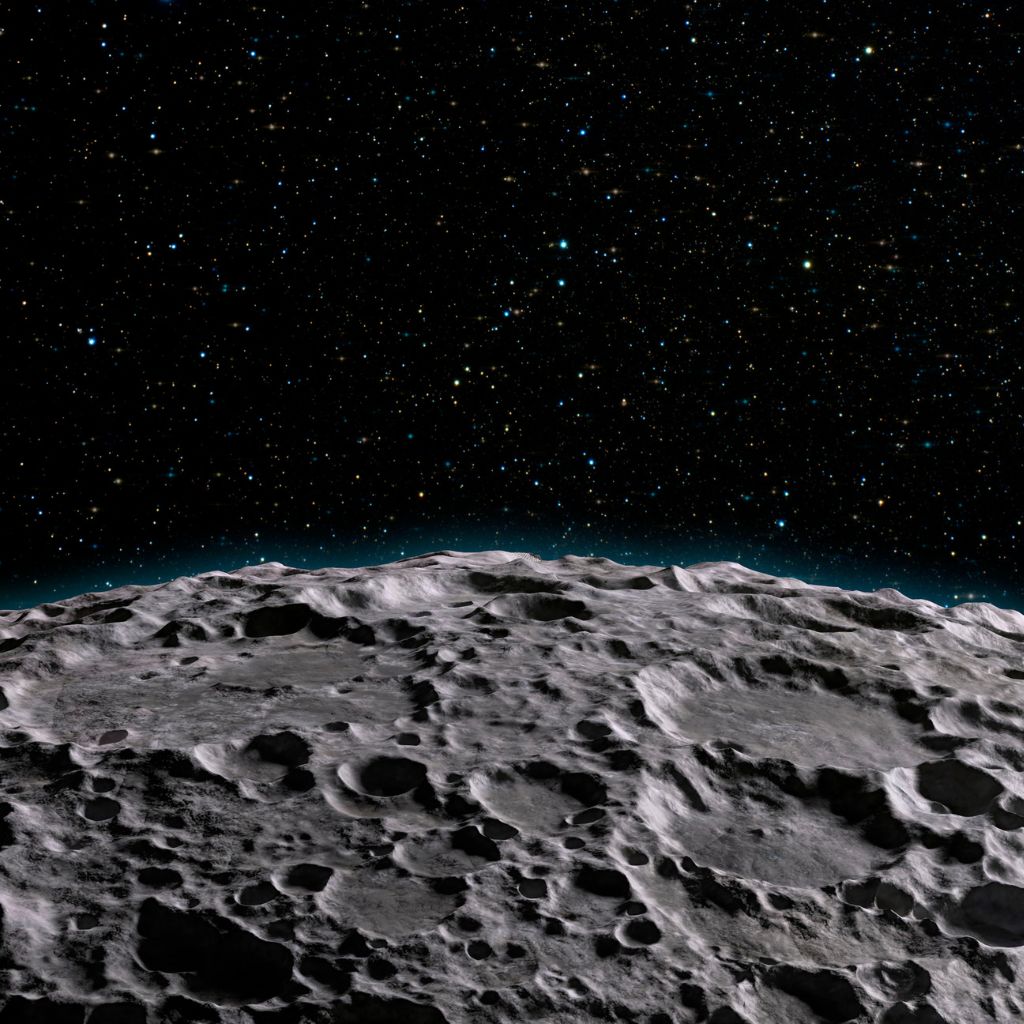
The moon has a popular chain of three large craters known as the great chain of Theophilus, Cyrillus, and Catharina. These craters have been around for billions of years. They are named after three astronomers who studied them in the 1600s.
They are visible from Earth, but you can get a better view of them using a telescope. A small telescope should be enough, but you must have at least a medium-sized telescope to get the most out of the experience.
Lunar X and Lunar V through a telescope
The Lunar X and Lunar V are two small optical illusions on the moon that look like the letter X or V, depending on how you view them. These can be pretty hard to spot with the naked eye, but you can get a great view of them using a medium-sized to large telescope.
Lunar X is also referred to as Purbach Crater or Werner Cross. It mainly occurs during the First Quarter and only appears when the sun rises in this region. To enjoy a good view of Lunar X, wait for the right time and look near the terminator between craters Purbach, La Caille, and Blanchinus.
Lunar V lies between the Ukert crater and a few minor craters in the higher north in the Mare Vaporum region. It appears at the same time as Lunar X but is slightly bigger and lies on the terminator. A large telescope can allow you to view these features in the same image.
Polar ice caps through a telescope

The permanently shadowed areas of the moon’s polar regions contain large amounts of ice deposits. Most craters also contain high ice concentrations but are extremely cold, making exploration almost impossible.
Using a large-aperture telescope, you can observe areas around the moon’s poles and spot some of these icy deposits. You can also see the bright patches of molecular hydrogen, making for an incredible viewing experience.
Read also: 14 Best Telescopes to See the Moon
Observing the planets through a telescope
Telescopes differ in their ability to resolve features on planets. A small telescope will struggle to see much more than the planet’s disc and its moons and is only effective on giant planets due to the light they reflect. Medium telescopes provide views and faint details of small planets, even in light-polluted areas.
Large telescopes are the ultimate tool for discovering the secrets of outer planets like Jupiter, Saturn, and Uranus. They have enough light-gathering power to reveal the cloud bands, storms, and moons around these planets. Let us look at various planets and how they appear in a telescope.
You may also like: Planets Through Telescope: What Do They Look Like?
Mercury through a telescope
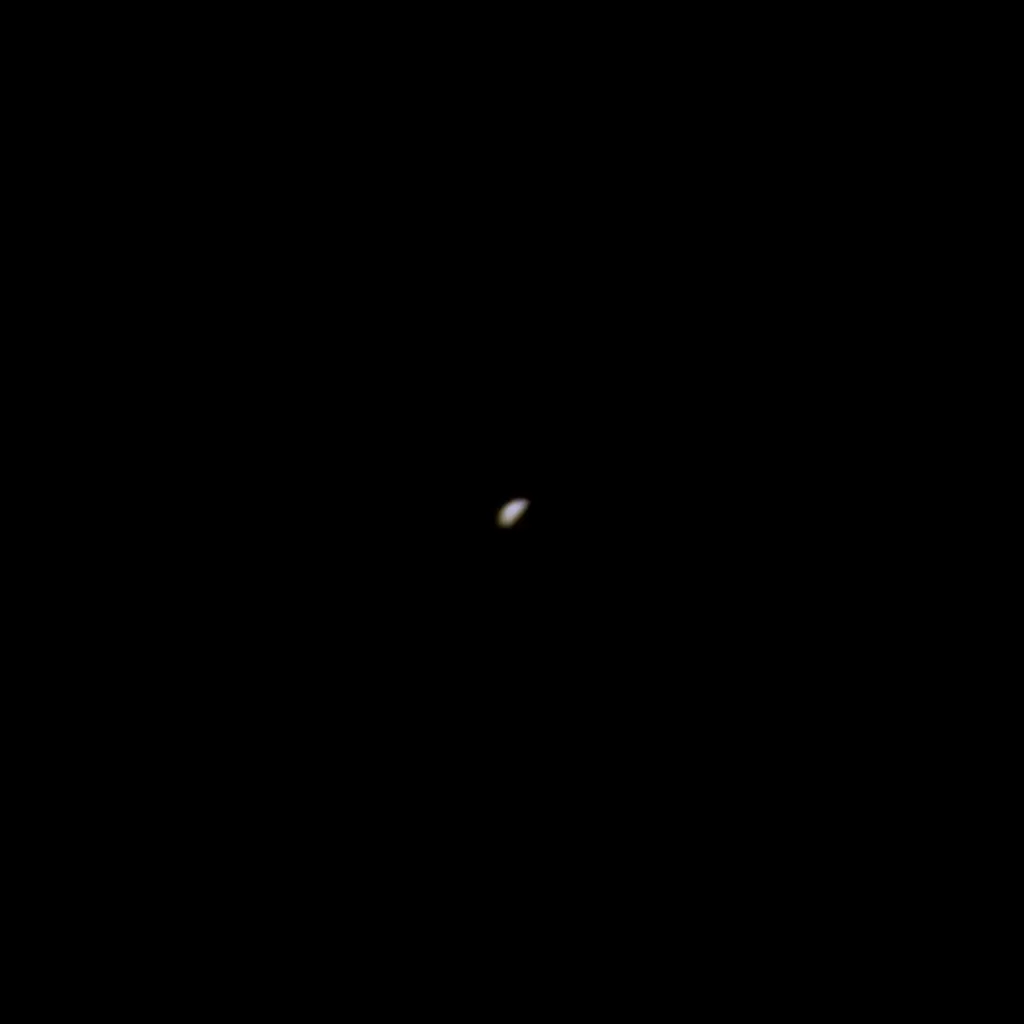
Mercury is the innermost planet of our solar system, and it appears as a small disc in telescopes. It is not well-suited for observation since it’s very close to the sun. When pointing your telescope towards Mercury, avoid looking directly into the sun.
The best time to observe is in the eastern morning sky before sunrise or the western evening sky after sunset. When observing, you need to wait for when the planet is far enough away from the sun’s glare.
Venus through a telescope
Venus is farther from the sun than Mercury and appears as an almost perfect circle in small telescopes. The features of Venus’s atmosphere range from bright spots to dark clouds. With a small telescope, you can see the Venusian terminator (the line between the day and night sides of the planet).
If you have a much bigger telescope, you can resolve fine details of Venus’s cloud structure. These highly reflective clouds make Venus the brightest planet in the night sky. The best time to observe Venus is when it is near its maximum brightness, which you can see during the summer months.
Mars through a telescope
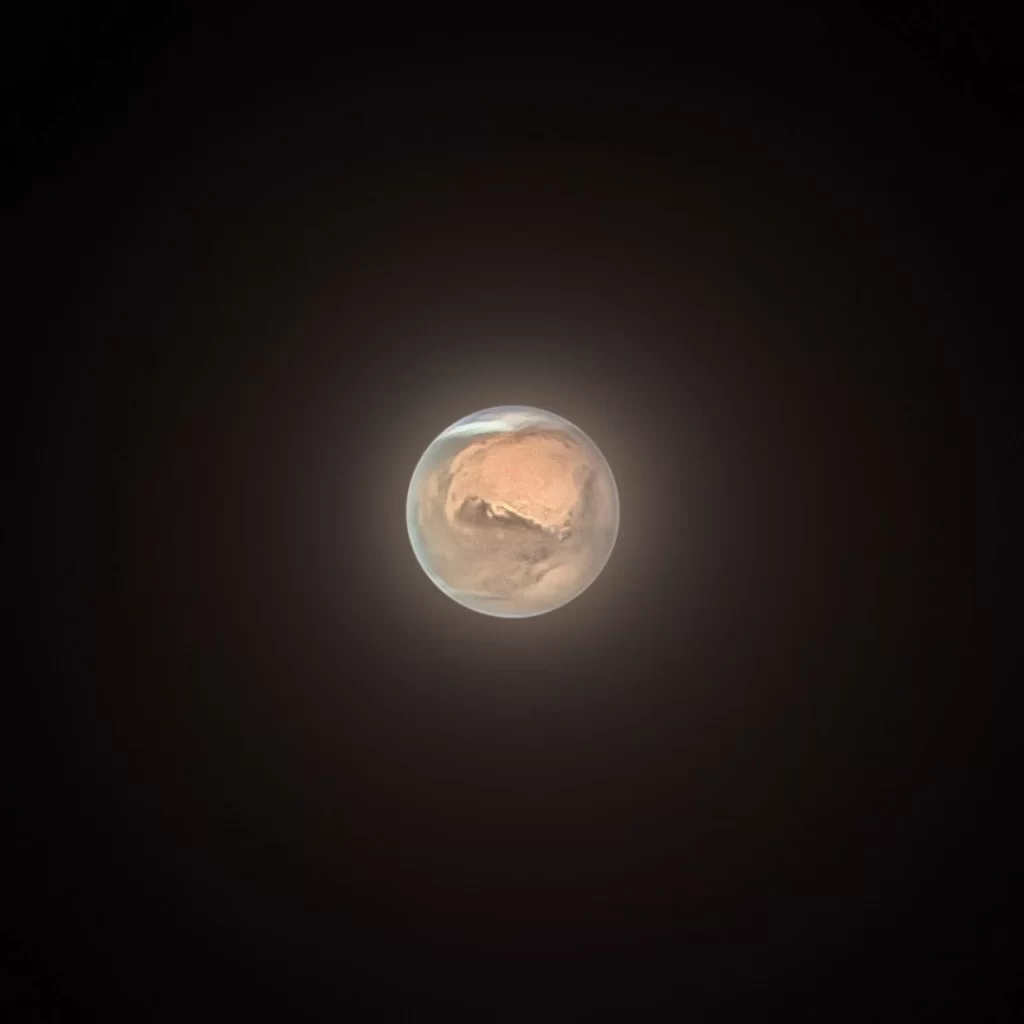
Every 26 months, Mars makes its closest approach to Earth. During this period, it is possible to make out the faint markings on its surface. But this does not limit you to only observing it then, as Mars is visible in the night sky all year round.
A medium-sized telescope reveals the white polar ice caps and dark areas of Mars. Even with a small telescope, you can make out the major features such as Syrtis Major and Mare Acidalium. When observing Mars, use high magnifications and take your time on one object at a time to reveal the most detail.
The low-lying carbon dioxide clouds and the permanent cloudcap Olympus Mons are great views for a large telescope. Olympus Mons is a volcano about three times the size of Mount Everest and is the highest mountain on Mars. It’s a stunning shield volcano with a height of at least 21.9 km.
I recommend the Celestron – 70mm Travel Scope – Portable Refractor Telescope for observing most planets. It has a 70 mm aperture, giving it enough power to resolve details on Mars and other planets.
You may also like: What Telescope Size Do I Need to See Mars?
Jupiter and Saturn through a telescope
Jupiter and Saturn are the two biggest planets in our solar system. They will appear as bright discs in all sizes of telescopes, and their moons are also visible. Jupiter appears larger than Saturn, but you can use the moons and rings of Saturn to tell them apart.
You can observe Jupiter’s atmosphere’s cloud bands and storms in a medium-sized telescope. These features and its four largest moons make it a mesmerizing sight. A large telescope lets you see the Great Red Spot and its faint belts.
Saturn’s brilliant rings provide a fantastic sight. You can see the rings with a small telescope and their divisions with a larger one. A powerful large-aperture telescope can also observe the slight banding of some of Saturn’s moons and its atmosphere.
You may also like: How Big of a Telescope Do You Need to See Saturn’s Rings?
What planets can you see through a regular telescope?
Most of our solar system’s planets can be seen via a regular telescope. The brightest planets in our starry heavens, such as Mercury, Venus, Mars, Jupiter, and Saturn, are visible with a medium-sized telescope.
However, Uranus and Neptune require a more powerful telescope to observe. They appear as faint discs and can be challenging to spot with a regular telescope.
Sometimes, you can spot the dwarf planets Pluto, Eris, and Haumea with a regular telescope.
The Sun through a telescope
The sun is a powerful and captivating celestial body, but observing it using the naked eye or even with binoculars or a telescope could lead to permanent eye damage. Even with solar filters, taking extreme care when looking at the sun is crucial.
The sun has large sunspots, which are dark spots on its surface. They appear in groups, and you can view them on your telescope during the day.
A reflector telescope is the best telescope for viewing the sun. The Orion SkyQuest XT8 Classic Dobsonian Telescope is an 8-inch powerful telescope ideal for use during the day. But remember, you still need a filter.
If you have a powerful telescope, add a solar filter and enjoy the prominences and filaments. These intricate details appear as bright loops and dark clouds extending from the sun’s surface.
There are several ways you can observe the sun using a telescope without risking permanent damage to the retina. The only safe time to look at the sun without protection is during the phase when the moon is between the earth and the sun, known as a solar eclipse.
With a reliable telescope, you can observe the sun. But you must add a solar filter at the objective lens to protect your eyes from the intense light. The filter reduces the light intensity so it won’t damage your eyes.
The Astromania Deluxe Filter 100mm Adjustable Metal Cap for Telescope Tubes is an excellent filter for viewing the moon through a telescope. It fits most telescope tubes and has an adjustable metal cap to store it properly between uses.
White light solar filters block 99.99% of visible light, making them ideal for viewing sunspots and the solar photosphere. A telescope with a larger aperture will provide you with better sun views.
You may also like: 10 Top Celestron Telescopes to See Planets (Ranked!)
Comets through a telescope
You may have seen a comet with your naked eyes if you are lucky. Some comets are so intense that they become visible even without a telescope.
But, if you want to observe comets up close and in their full glory, get yourself a medium-sized telescope and place it in your backyard or a portable setup to carry during night-time expeditions.
Comets often appear as fuzzy balls with bright heads and a long tails, so you may need to increase the magnification to get a better view. With the right optical equipment, you can observe a comet’s head and tail in all its glory.
Comets brighter than magnitude 0 are rare and appear once every fifteen years. You can view them without additional equipment since they are intense and bright.
Such comets require an experienced eye in the dark skies and patience. The timing has to be right, but the wait is worth the effort.
Star clusters through a telescope
Stars are tiny, infrared-emitting points of light that appear in the night sky. When thousands of stars are packed close together, they appear in clusters you can see with a regular telescope.
The most common type of star cluster is open star clusters. They appear as bright patches and have stars of the same age and composition. They are large and visible to low-powered telescopes.
Globular clusters are dense clusters containing hundreds to millions of stars. They appear as light fuzzy balls when viewed with a telescope.
The Celestron NexStar 8SE is a durable telescope allowing you to observe star clusters in great detail thanks to its 8-inch aperture and excellent resolving power. It is easy to use and has a built-in database of hundreds of thousands of celestial objects, making it perfect for the novice astronomer.
But how do stars look through a telescope? Let us look at some of the most famous clusters in the night sky and how they appear:
Pleiades through a telescope
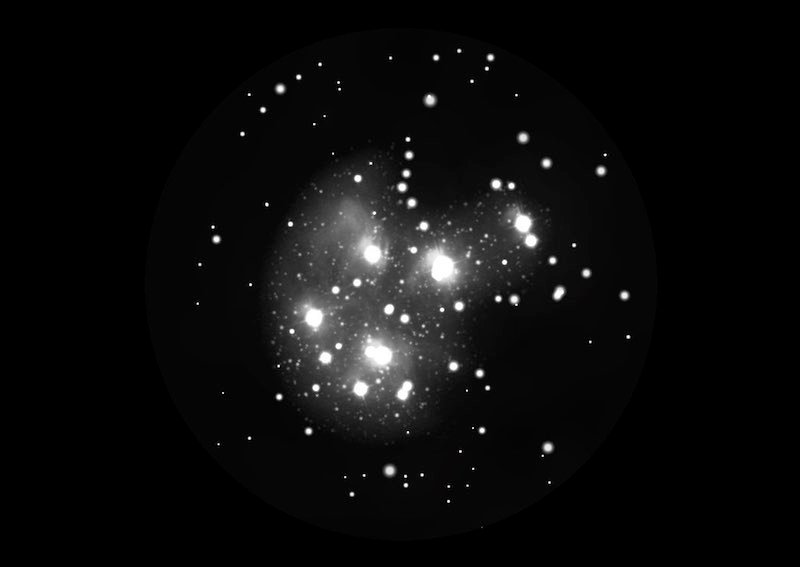
Pleiades, or the seven sisters, is an open cluster and number 45 on the Messier objects list. It is the brightest of all Messier objects, and you can easily find it in the winter skies.
Find the Orion belt (3 bright stars of the Orion constellation) and follow the belt to the right. It points to a bright orange star called Aldebaran; keep the line going, and eventually, you will see 6 bright stars very close together.
M45 is an open star cluster and a reflection of the nebula, but to see any nebulosity, you need a long-exposure photograph. You won’t see the nebulosity with a telescope through the eyepiece.
The M45 is relatively young because it was formed around 100 million years ago. It is not very interesting to look at, but it’s very famous, so it is worth your attention with the telescope.
Great Globular Cluster in Hercules (M13) through a telescope
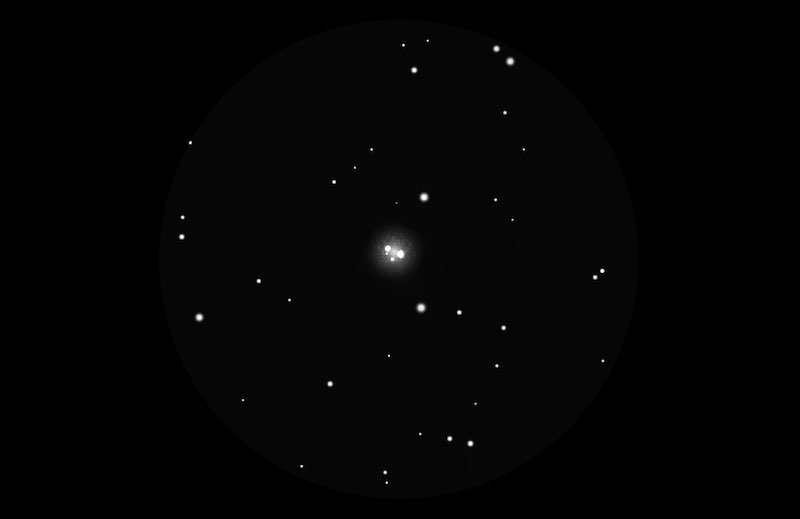
The Globular Cluster or Messier 13 (M13) is a cluster of seven hundred thousand stars in the Hercules constellation. It is one of the many globular clusters in the Messier catalog that is much older than open clusters.
These clusters live in a halo of our galaxy, so they are not inside of the galaxy. They sit out of the galactic plane and are the oldest objects of our Milky Way.
The stars in the Globular Cluster are almost 12 billion years old and existed when our galaxy formed. The Globular Cluster has a long life because it consists of low-mass stars with a very long lifespan.
On the other hand, high-mass stars live short. Luckily, our Sun is a low-mass star, so it will be here for many billion years.
Globular clusters are also a frequent target of astrophotographers. The Messier 13 is simply beautiful to photograph and look at through the telescope.
I would suggest a higher magnification for all the globular clusters to enjoy the view.
It’s also special because, in 1974, a radio message was sent from the Arecibo radio telescope in Puerto Rico carrying basic information about humanity towards it, known as Arecibo message.
The 3 minutes signal was sent despite the distance to the M13, which is more than 22,000 light years. It means that the radio signal to M13 will arrive there in 22,000 years. Remember that globular clusters sit outside of the galactic plane.
For example, Proxima Centauri, the closest star to our solar system, is only 4 light years away. But the real purpose of the message was not to contact extraterrestrials but to show the capabilities of the new pieces of equipment.
How do stars look through a telescope?
When you aim your telescope at a star, it will appear as a small point of light. It won’t look any different from the naked eye because stars are too far away and too small for us to see any detail.
But when you observe a cluster of stars, such as an open or globular cluster, the stars will be much closer together, and you can see the individual stars with a powerful telescope.
The Gskyer Telescope, 70mm Aperture 400mm AZ Mount Astronomical Refracting Telescope, is a pocket-friendly telescope with many features. It has great resolving power and is ideal for viewing faint, distant stars.
Read also: What Can You See With a 70mm Telescope? (Answered!)
Galaxies through a telescope
Most galaxies are so far away that even powerful telescopes cannot resolve their fine details. However, some are close to our planet; you can view them even with a small telescope.
A powerful telescope will expose more faint details, such as their spiral arms, dust lanes, and other features. Galaxies are a great target to observe when you have clear, dark skies and a powerful telescope.
Here are some of the most popular galaxies to observe through a telescope:
Southern Pinwheel Galaxy through a telescope
The Southern Pinwheel Galaxy is a spiral galaxy located about 15 million light-years from Earth. It is one of the brightest galaxies in the night sky; you can see it with a small telescope.
It has a pure spiral structure with no ring meaning the spiral arms are not wound close together, and it has a distinct pattern of stars and gas clouds. In 2008, it was reported that this dwarf galaxy had continued its formation and had many new stars on the edges.
Andromeda Galaxy through a telescope
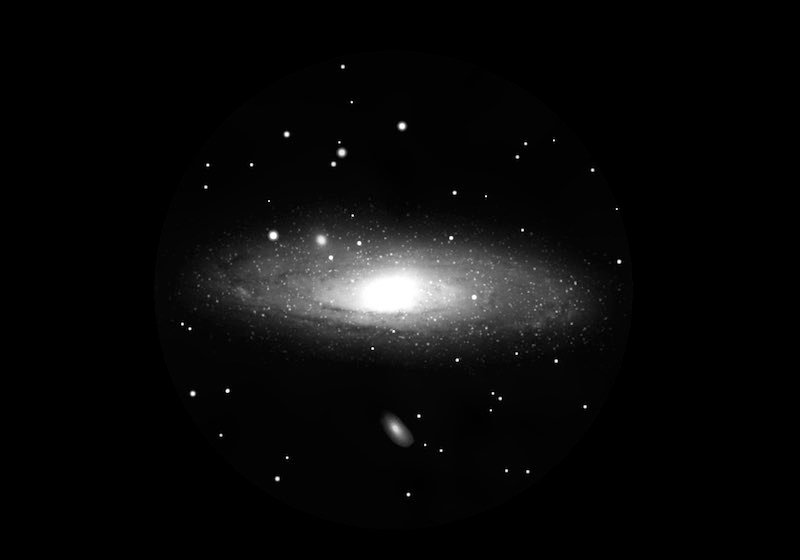
This is the biggest galaxy in the galactic neighborhood, twice the Milky Way’s size and 10x bigger than our Moon. It has a 200,000-light-year diameter and a spiral shape you’ll enjoy looking at.
In the telescope, you will only see the bright core surrounded by gas. Andromeda is the closest galaxy to us, the twin of the milky way. It is predicted that in the far future, about 4 billion years, the Milky Way will collide with Andromeda and form a new bigger galaxy.
Some stars will be ejected from the newly formed galaxy, but there is almost zero chance that two different stars from each galaxy will collide.
Scientists have devised two names for the new galaxy- Milkomeda or Milkdromeda. But it’s so far away that we may not be around here anymore.
What galaxies can you see with a telescope?
Due to the distance of most galaxies, it can be challenging to view them in detail, even with a powerful telescope. However, you can make out some galaxies close to the Earth, such as the Andromeda Galaxy, Bode’s Galaxy, Southern Pinwheel Galaxy, and the Silver Coin Galaxy.
These galaxies are easy to spot in dark skies, appearing brighter due to their closeness. They are also larger, so you can make out the details with a powerful telescope. You will be able to see the spiral arms and dust lanes of these galaxies with a telescope with high resolving power.
Nebulae through a telescope
There are many star-forming nebulae in the night sky that appear fluffy and bright. Stars are born in these clouds of dust and gas, so you can see them easily as colorful patches.
The best telescope to view nebulae is an 8-inch telescope with a focal length of less than 1000mm. This telescope lets you pick out faint but large structures such as the Orion Nebula, Pelican Nebula, and Dumbbell Nebula.
A telescope larger than 8 inches has a higher resolving power and can identify more details in the nebula. Let us look at some popular nebulae you can spot in the sky with a telescope:
Dumbbell Nebula through a telescope
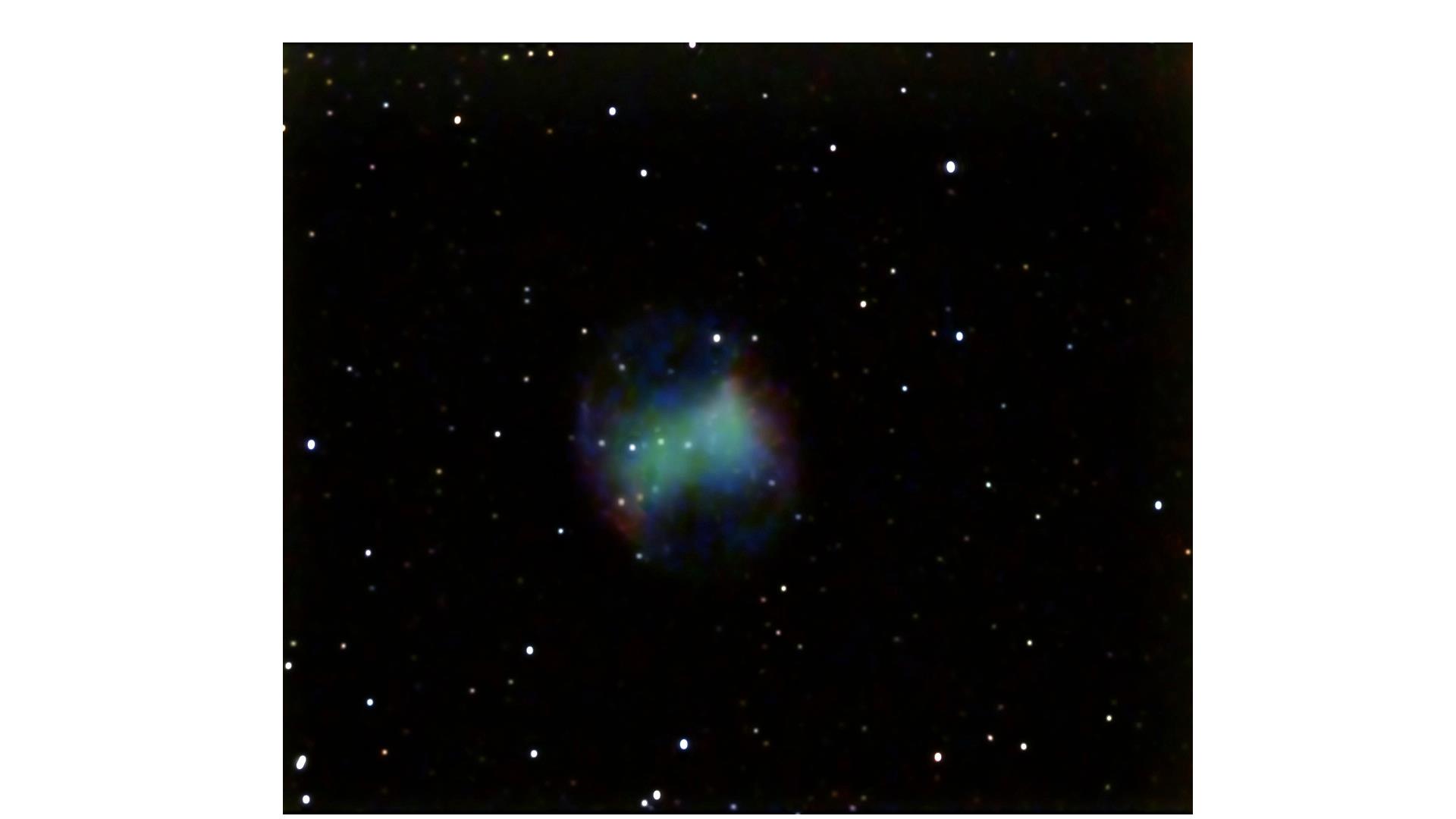
The name Dumbbell Nebula originated from its look because it looks like a dumbbell. It’s a Planetary formed due to an old star shedding its outer layers in a glowing display of color.
It got this name because, in the early days, when we looked at planetary nebulas, they looked like small round objects bigger than stars and were confused for planets.
Planetary nebulas are the opposite of star-forming nebulas like M42. They are the last stages in the life of the low-mass stars. The origin of the nebulosity is the explosion of the star.
In the case of M27, you can still see a white dwarf star created after the original star’s explosion. I will suggest higher magnification for planetary nebulas because they are small in the sky.
Orion Nebula through a telescope
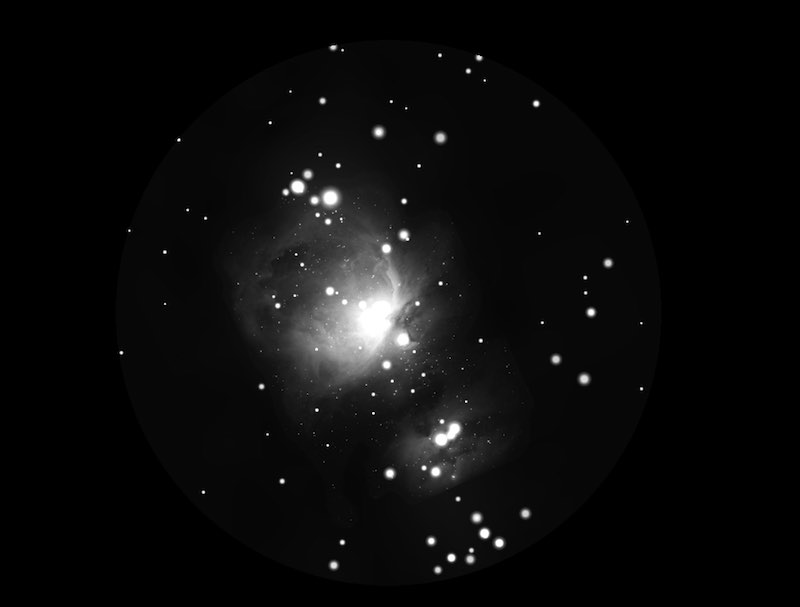
When you go out in the winter and look at the Orion constellation, you can see a fuzzy blob under the Orion belt: the Orion nebula. It’s the most wildly photographed object in the night sky because it is visible from the northern and southern hemispheres.
And it is maybe the most beautiful object to observe. You can see some color in a huge telescope, which is unique for a deep-sky object. Usually, the colors are only visible through astrophotography with long exposure images captured on the sensitive camera sensor.
Orion nebula is a star-forming nebula that astronomers call a stellar nursery. This is a vast cloud of gas and dust where thousands of stars are born. Studying these nebulas allows astronomers to gather knowledge of how the stars are born.
This nebula is also relatively close to us, which is why it is so bright. I recommend this target to anyone with a telescope or pair of binoculars.
Read also: What Telescope Size Do I Need to See Galaxies?
Light pollution
Astronomers living in a city or near an area with light pollution face a challenge when observing deep-space objects. Finding an area with dark skies and little light interference from the city lights is essential for the best viewing experience.
Living in a city or area with light pollution can make astronomy a bit challenging. Finding deep-space objects in night skies becomes difficult due to the interference from city lights.
To make out distant galaxies and details, you need a dark sky and special filters to block out light pollution. However, these filters are not very effective in highly light-polluted areas.
You can struggle to find planets that are farther away, such as Neptune and Uranus. But you stand a better chance if you know where to look and have the right filters.
What can you see with different telescope sizes?
A telescope’s power lies in its aperture and focal length. The more aperture, the more light-gathering power; the higher the focal length, the more resolving power.
With higher resolving power, you can see details such as stars and dust lanes in the nebula. You can also use a focal reducer attachment, increasing the field of view and making it easier to observe clusters of stars, galaxies, and other deep-space objects.
What can you see through a 10-inch telescope?
A 10-inch telescope can easily pick out details too faint in dark skies, such as the Horsehead Nebula, Trifid Nebula, or Lagoon Nebula.
Even in light-polluted areas, you can enjoy views of galaxies, double stars, planets, and planetary nebulae.
What can you see through a 4-inch telescope?
There are countless double stars and other deep-sky objects you can observe with a 4-inch telescope. Some objects, such as the moon, planets, and galaxies, are visible to astronomers with a 4-inch telescope.
What can you see through the telescope during the day?
If you only take out your telescope at night, you may be missing out on other universe wonders during the day. “What can you see through a good telescope during the day?” should be a question lurking somewhere in your head.
Viewing the sun is possible with the right solar filters, and you can observe its sunspots and other features.
Some planets, including Venus, Mars, and Jupiter, are sometimes visible during the day. You can also observe faint stars with high magnifications.
What can you see at night through a telescope?
The best time to use your telescope is at night. With the right telescope and environment, you can observe nebulae, galaxies, planets, clusters, and comets.
A significantly powerful telescope will expose to you the finer details of these objects. You can see the spiral arms of galaxies and star formations in nebulae. You can spot supernova remnants and distant quasars with a very powerful telescope.
Takeaway: Unlock the wonders of astronomy through different telescopes
Whether it’s day or night, a telescope is a mood changer. You point to the sky and immediately forget your problems as you unlock the wonders of astronomy.
If you are lucky and find an area with dark skies and no light pollution, you can easily pick out many celestial objects. Always go for a telescope with an aperture and focal length that gives you adequate resolving power for your needs.
Don’t forget to subscribe to our newsletter where you’ll find the latest cosmic discoveries, expert stargazing tips, and exclusive subscriber deals. Embark on your cosmic journey if you haven’t already!
You may also like:

